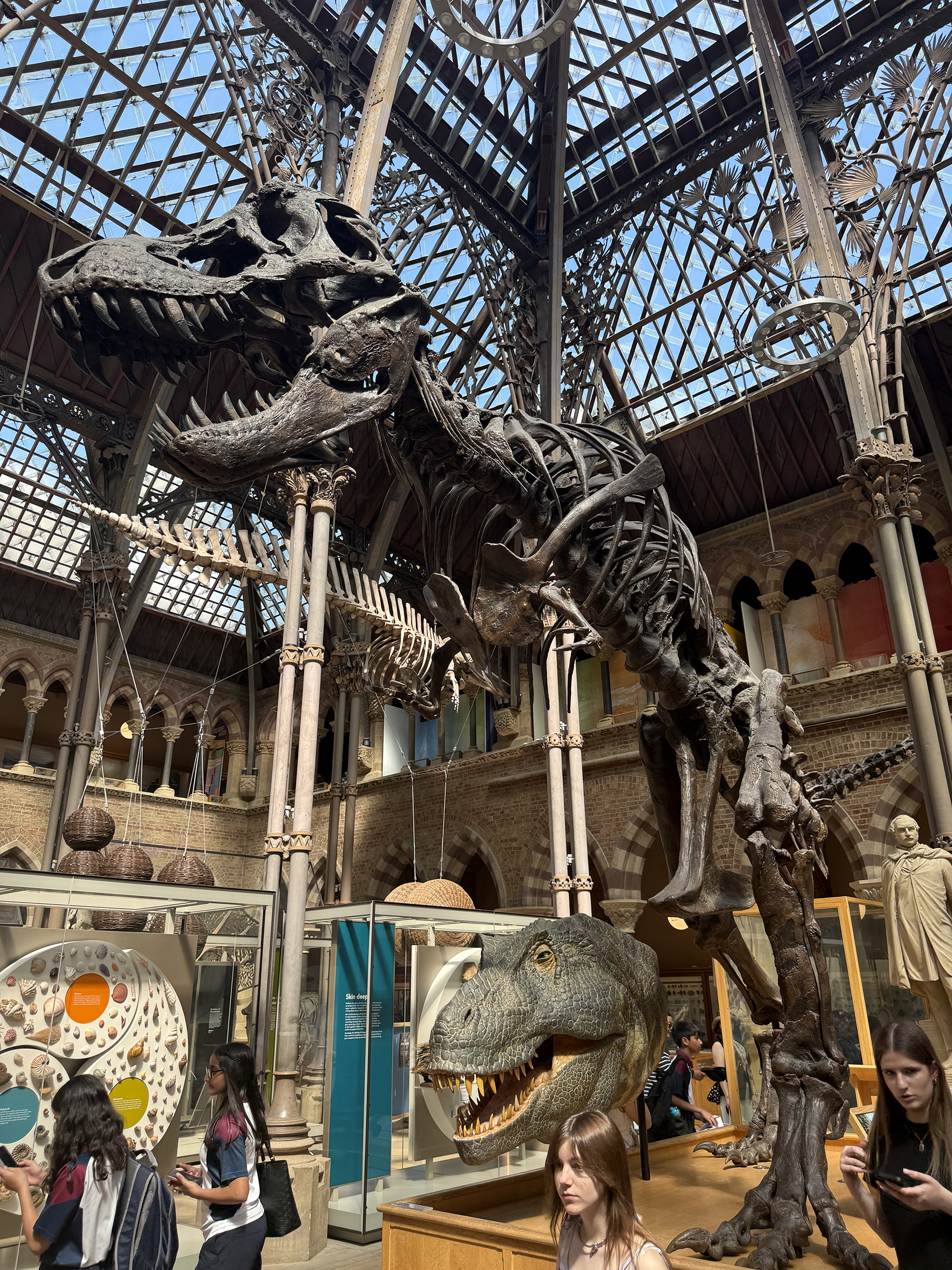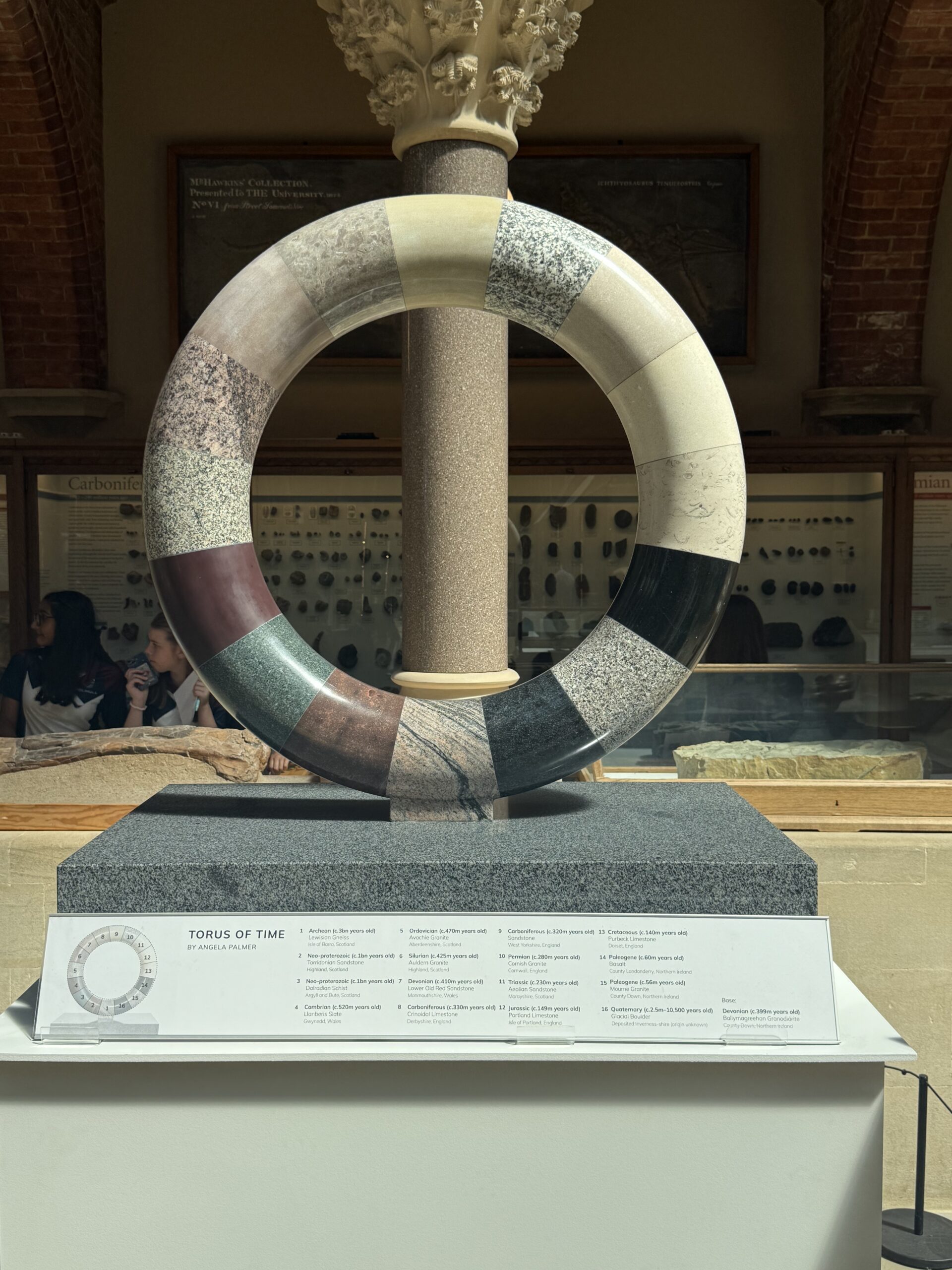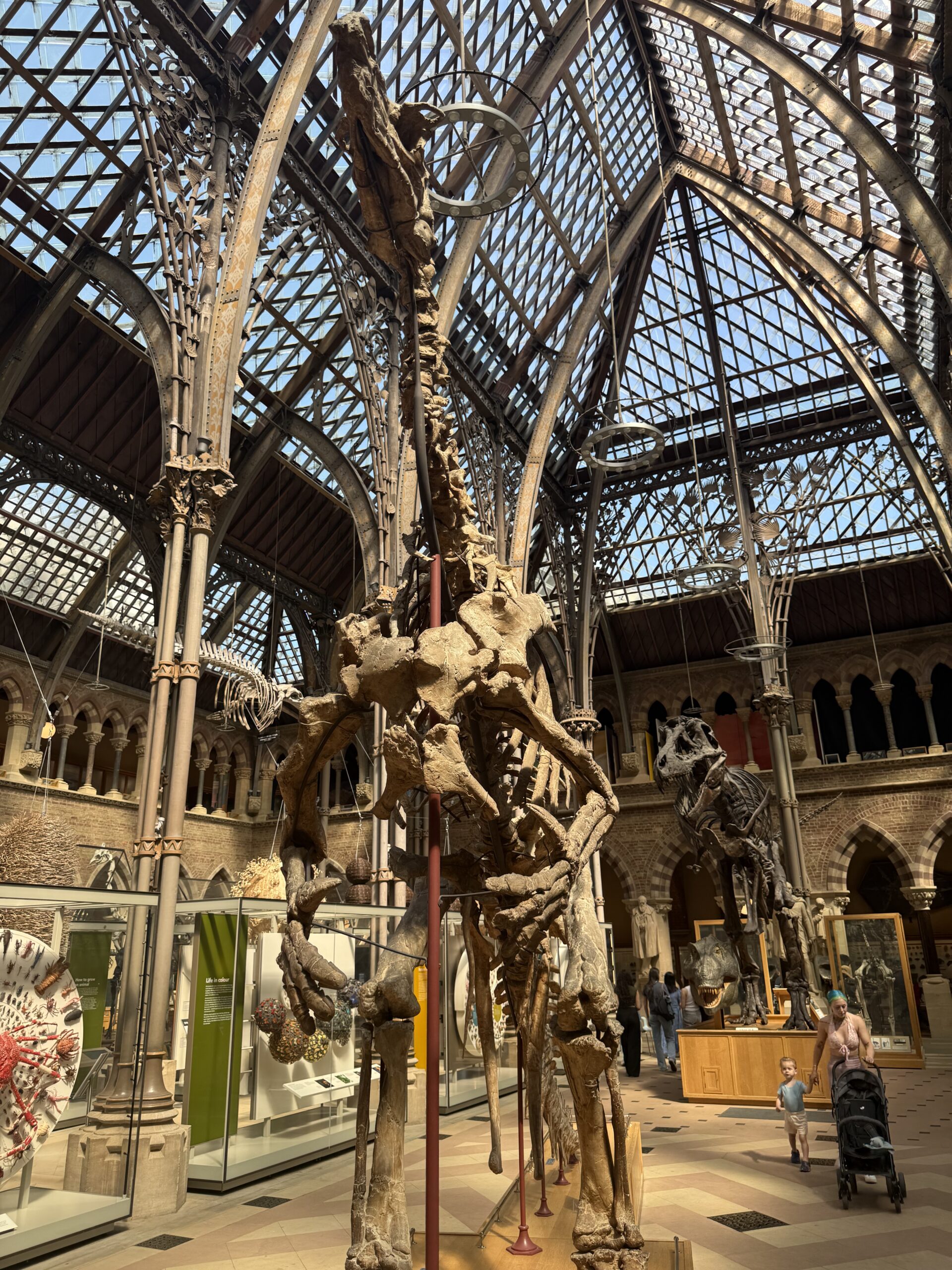As part of our IB Theory of Knowledge (TOK) course, our class visited two well-known museums in Oxford: the Oxford University Museum of Natural History and the Pitt Rivers Museum. The aim of this visit was to explore and choose three real-world objects that we could later use in a practice TOK Exhibition. The experience helped us understand TOK ideas more deeply and encouraged us to be curious, observant, and thoughtful. It also connected well with the CAS learning outcomes.
The Oxford University Museum of Natural History is a large and beautiful space filled with scientific collections. We saw dinosaur skeletons, fossils, minerals, and taxidermy animals. As we walked through the exhibits, we began thinking about how scientific knowledge develops over time and how this can be represented through physical objects. For example, we saw a dodo skeleton, which made us consider how some knowledge disappears when a species goes extinct, and how science tries to recover information from the past using available evidence.

After that, we visited the Pitt Rivers Museum, which is attached to the Natural History Museum but feels very different. It is famous for its extensive collection of cultural objects from around the world. What makes it special is that the objects are not sorted by country or historical period. Instead, they are grouped by theme such as tools, weapons, clothing, or masks. This made us to question how museums organise knowledge and whether there is a single “correct” way to do so.
While exploring, each of us chose three objects to potentially use later on in our TOK Exhibition. We took photos, wrote notes, and discussed our thoughts with classmates and teachers. We were encouraged to think not just about what the objects are, but also what they represent. For example, we asked questions like: How do artefacts help keep cultural knowledge alive? Can scientific objects be trusted as evidence, or do they need explanation? And whose knowledge is shown in museums, and whose is left out?


This trip really helped me improve my TOK thinking. I started looking at everyday objects differently and asking deeper questions. It also helped me with my CAS goals, as I was learning outside the classroom and talking to others about my ideas. Discussing objects and their meanings helped me develop my communication skills as well.
One thing my classmate Filippo said, stayed with me. He looked at an old tool and said, “This could mean something very different to someone else.” I think that shows how our backgrounds and experiences affect the way we understand knowledge.
Overall, this museum trip was a meaningful experience. It reminded me that objects can carry more than just facts. They also hold stories, beliefs, and questions that help us understand the world and ourselves better.
Written by Mert – IB26 student
